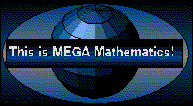


It is true that experienced mathematicians communicate the proofs of their theorems in a sparse language that wastes no ink on the page. Inexperienced mathematicians should remember that when they are communicating with one another, completeness, comprehensibility, and understanding are far more important than dense language. What matters the most is showing that the proof has been pursued logically, and that there are no leaps or gaps in the path to the conclusion.
Always in mathematics, it is important to ask, ``How do I know this?'' and ``Am I sure that this is true?'' and to communicate the answers to those questions in language that is clear in the mathematical community to which you belong.
It is important to remember that proof is not persuasion. Something is not proved mathematically because it seems believable. A statement is true mathematically when, by the rules of logic, it is irrefutable.
Understanding the three proof techniques of induction, deduction, and proof by contradiction can often give you ideas for approaches to take when you are struggling with a problem. You can think of these three techniques as patterns of reasoning. These patterns of reasoning are useful in two ways:


